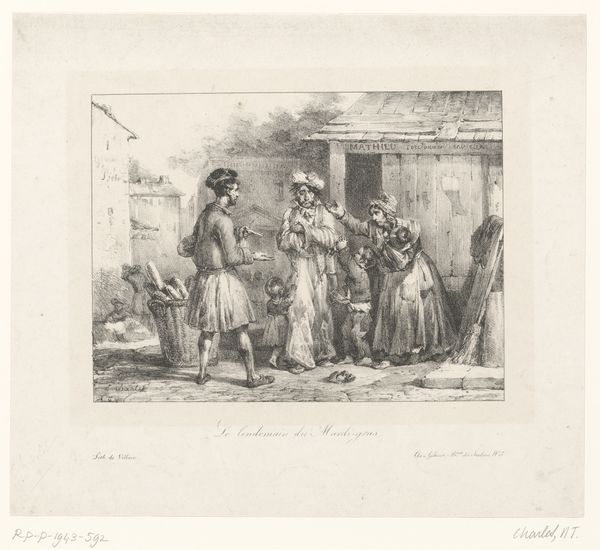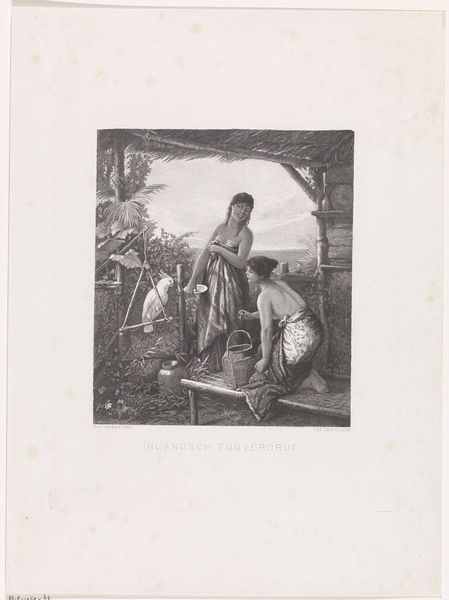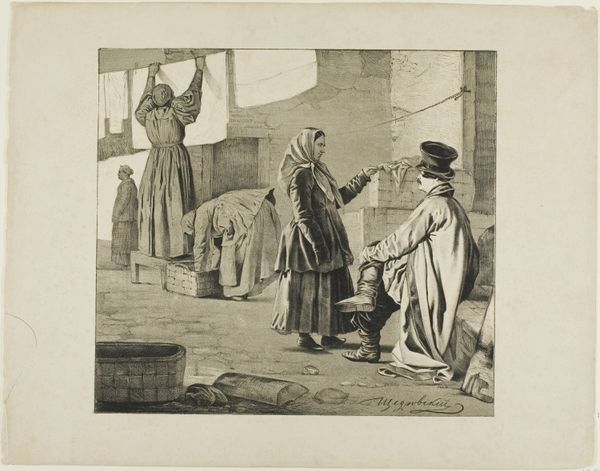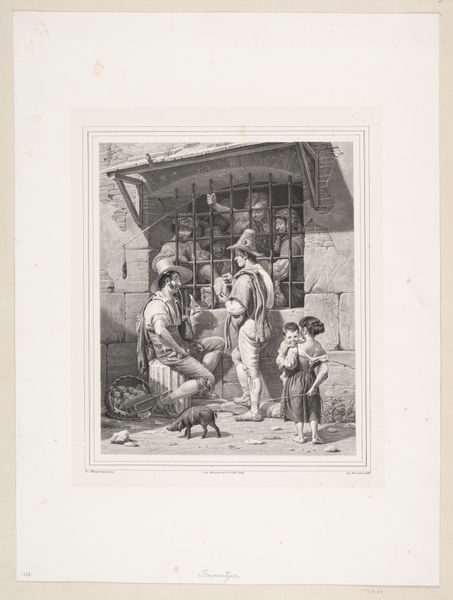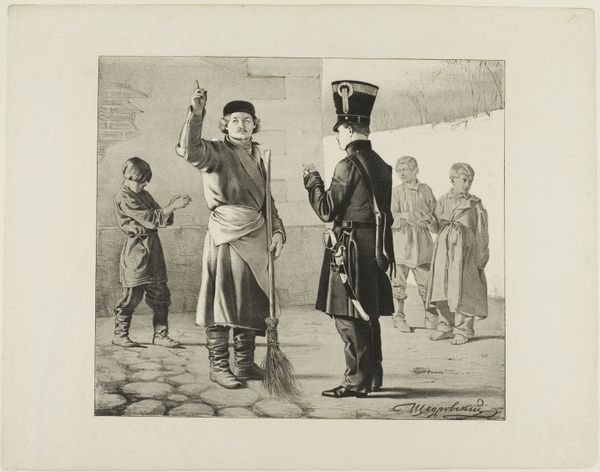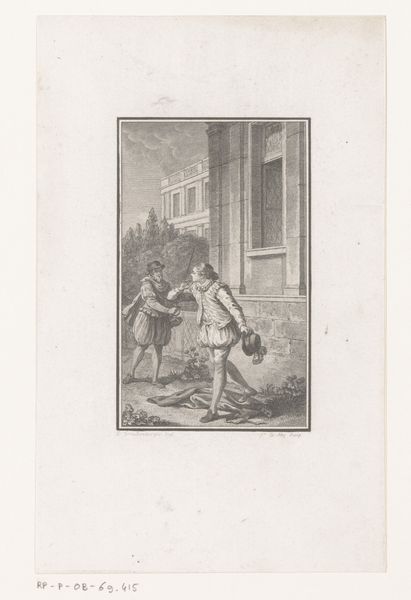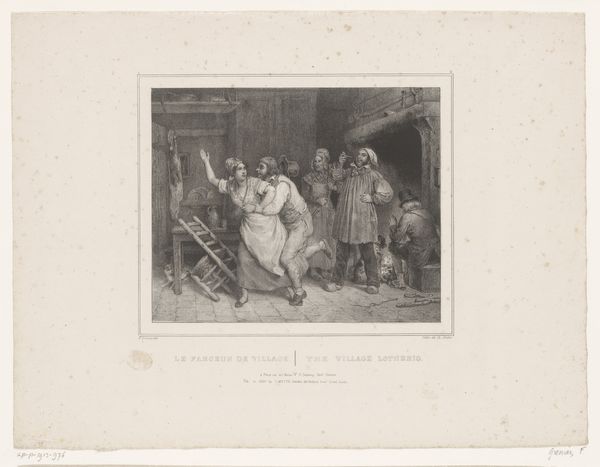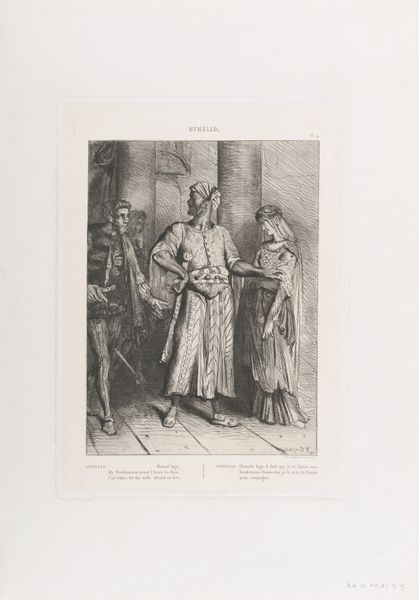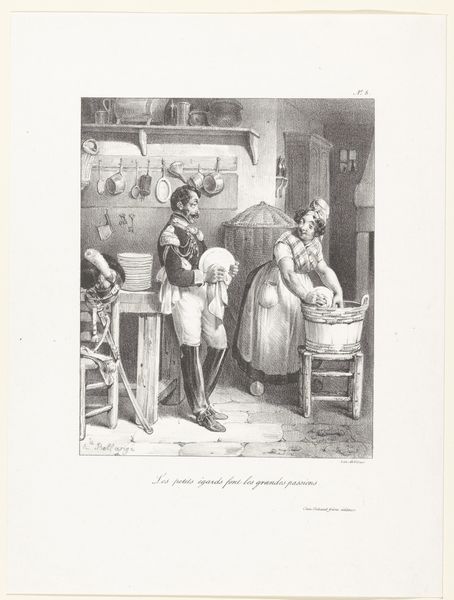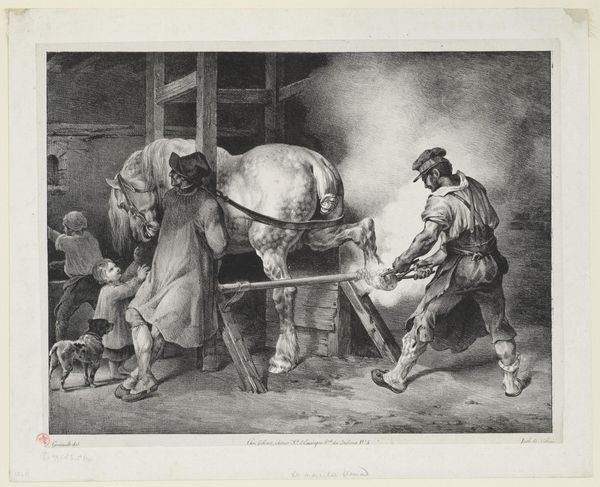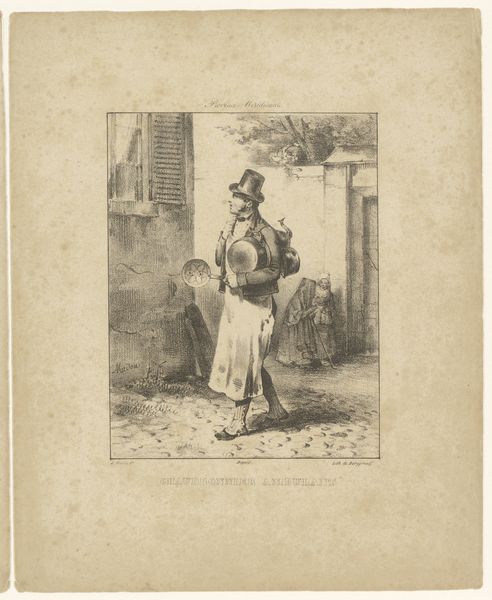
Dimensions: image: 22.3 x 31.7 cm (8 3/4 x 12 1/2 in.) sheet: 35.7 Ã 49.1 cm (14 1/16 Ã 19 5/16 in.)
Copyright: CC0 1.0
Curator: Géricault’s "A Paralytic Woman" presents a tableau of urban life, rendered with stark realism. It's a lithograph; note the subtle gradations achieved through the printing process. Editor: It's immediately striking—the weariness etched on the woman's face, juxtaposed with the detached figure pulling her chair. It speaks volumes about vulnerability and societal indifference. Curator: The lithographic technique allows Géricault to capture fine details, highlighting the textures of clothing and the rough surfaces of the urban environment, emphasizing the lived reality. Editor: Absolutely. The positioning of the paralytic woman near the jail bars in the background really drives home the theme of confinement—both physical and societal. How are women and other vulnerable people treated here? Curator: Consider the economics of printmaking here; how does the lithograph's reproducibility grant access to a wider audience, and thus a broader social conversation? Editor: And it implicates us. We're not just observing; we're part of this system. The drawing pushes us to reflect on our roles in perpetuating or dismantling such structures. Curator: Indeed, Géricault's focus on process and accessibility opens avenues to dissect how art operates within a market-driven society. Editor: It's an unflinching look at social disparity; a reminder of the human cost of indifference.
Comments
No comments
Be the first to comment and join the conversation on the ultimate creative platform.



